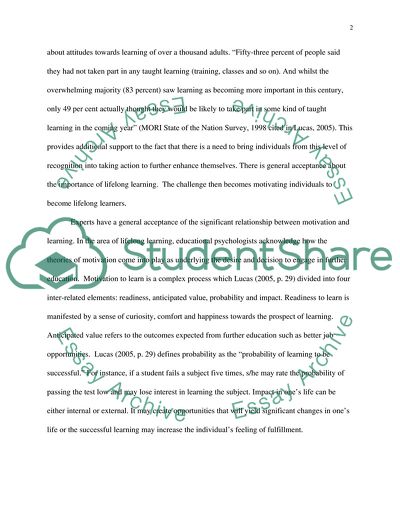Cite this document
(The Role of Motivation in Lifelong Learning Research Paper, n.d.)
The Role of Motivation in Lifelong Learning Research Paper. Retrieved from https://studentshare.org/education/1737744-student-motivation-in-further-education
The Role of Motivation in Lifelong Learning Research Paper. Retrieved from https://studentshare.org/education/1737744-student-motivation-in-further-education
(The Role of Motivation in Lifelong Learning Research Paper)
The Role of Motivation in Lifelong Learning Research Paper. https://studentshare.org/education/1737744-student-motivation-in-further-education.
The Role of Motivation in Lifelong Learning Research Paper. https://studentshare.org/education/1737744-student-motivation-in-further-education.
“The Role of Motivation in Lifelong Learning Research Paper”, n.d. https://studentshare.org/education/1737744-student-motivation-in-further-education.


